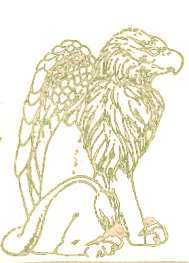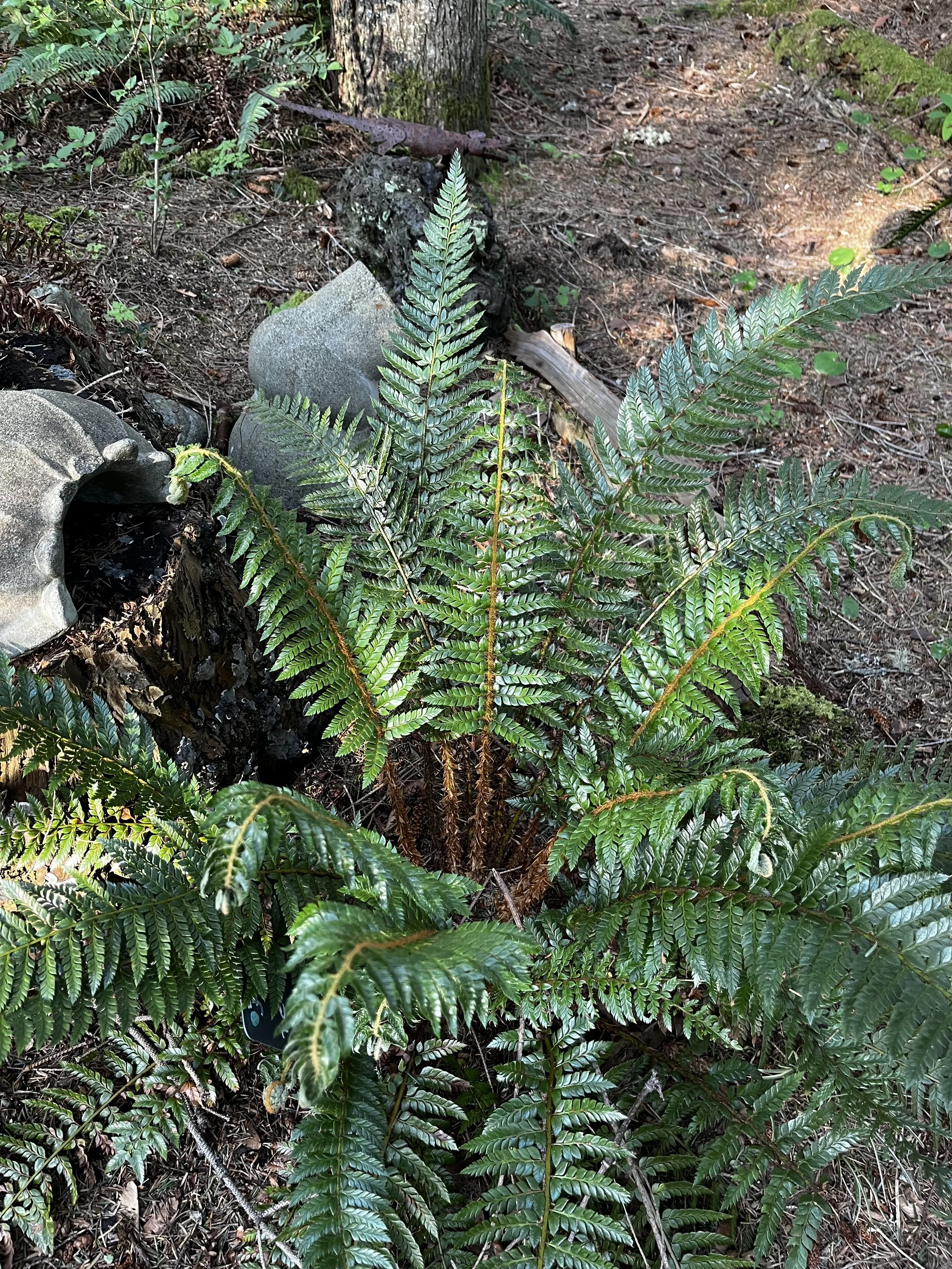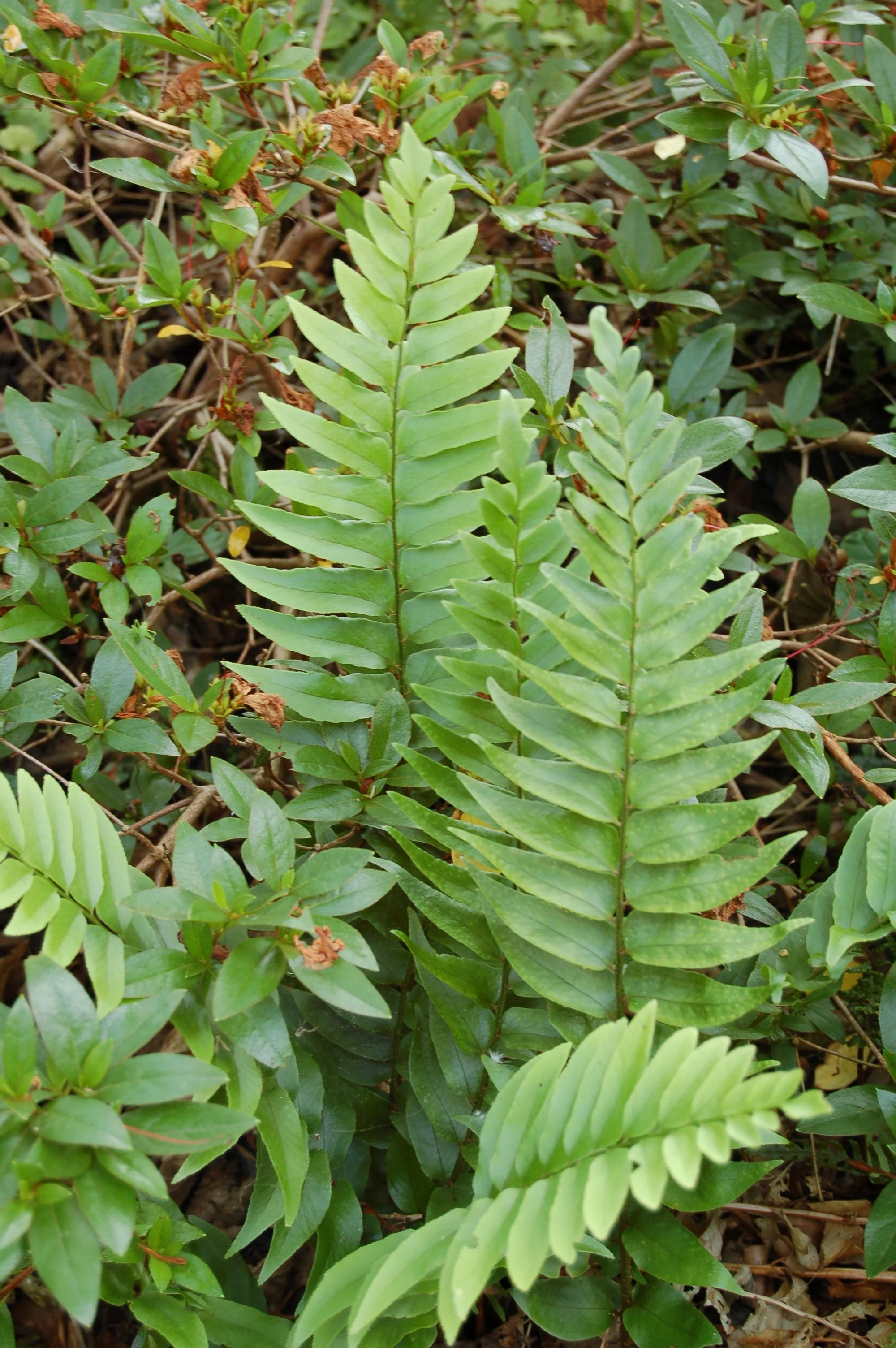Search for ferns by common name, latin name, USDA Zone, or by keywords like whether the fern is Evergreen, Sub-Evergreen, Semi-Evergreen, Deciduous, or Wintergreen or just browse our current fern selections.
Long Eared Holly Fern (Polystichum neolobatum)
Long Eared Holly Fern (Polystichum neolobatum)
This fern has the thick substance of the florist fern known as the Leatherleaf Fern and seems indestructible no matter what the winter brings. The stipe and rachis are heavily clothed with medium to dark brown scales and the fronds tend to array themselves in a slightly horizontally arching manner. The polished gloss of the surface becomes overlaid with a silver wash as the blades mature. The bipinnate bipinnate blade is broadly lanceolate becoming gradually acuminate at the apex with the pinnae echoing this pattern. The uppermost pinnule next to the rachis is an exaggerated oval overlapping the lower pinnule on the pinnae above making a most distinctive "long-eared" pattern. I dubbed it long-eared holly fern (with John Mickel's approval) after the long-eared owl of the Arizona desert where I grew up. This fern was orignally introuduced to local Northwestern gardeners by Sue Olsen of Foliage Gardens via spore exchange spores from a German fern enthusiast. It seems that I need to add a further comment regarding an identity crisis in the commercial trade. The wholesale grower that I passed this fern along to many years ago somehow lost or sold the original stock plants and replaced them with a similar looking species that I had shared with them also. Recently many nuseries that are offering neolobatum are actually selling Polsytichum sp. (formerly incorrectly labeled as squarrosum) or Spiny Holly fern. This Polsytichum was given to me by David Palmer who received it from Alan Leslie at Kew. I contacted Alan and he verified that the fern was from Yunnan, China. I have corrected the stock plant error but many flats were sold under the incorrect name before I caught the error. The so called Spiny Holly may in fact be the alpine form of neolobatum but thus far that identification is conjectural. There are a couple of characteristics that may help you determine which one you have. The pinnule edges of the Long-eared Holly are fairly flat compared to the slightly convex edges of the Spiny Holly. The final mature color of the former has a silvery sheen to it and the latter is a very deep blackish-green. There are other less easily detected differences but these are the easiest to spot. However just to throw an little more confusion into the mix Terra Nova Nursery markets this species as Shiny Holly instead of Spiny Holly. They did receive this fern from me and the first name had already been assigned to this species before they cleverly thought up a new one. I also see that the Great Plant Picks Program here in the Pacific Northwest has dubbed this the "Asian Sabre Fern" just to further confuse and complicate matters. Whichever one of these holly ferns you get both are equally stunning in the garden.
Frond Condition: Evergreen
Mature Height: 24-30" (2 - 2.5')
Origin: Nepal, Himalayas, Tibet, Burma, China, Taiwan, Japan
Cultural Requirements: Some Shade, Partly Shaded, Full Shade, Evenly Moist
USDA Zones: 6, 7, 8, 9










